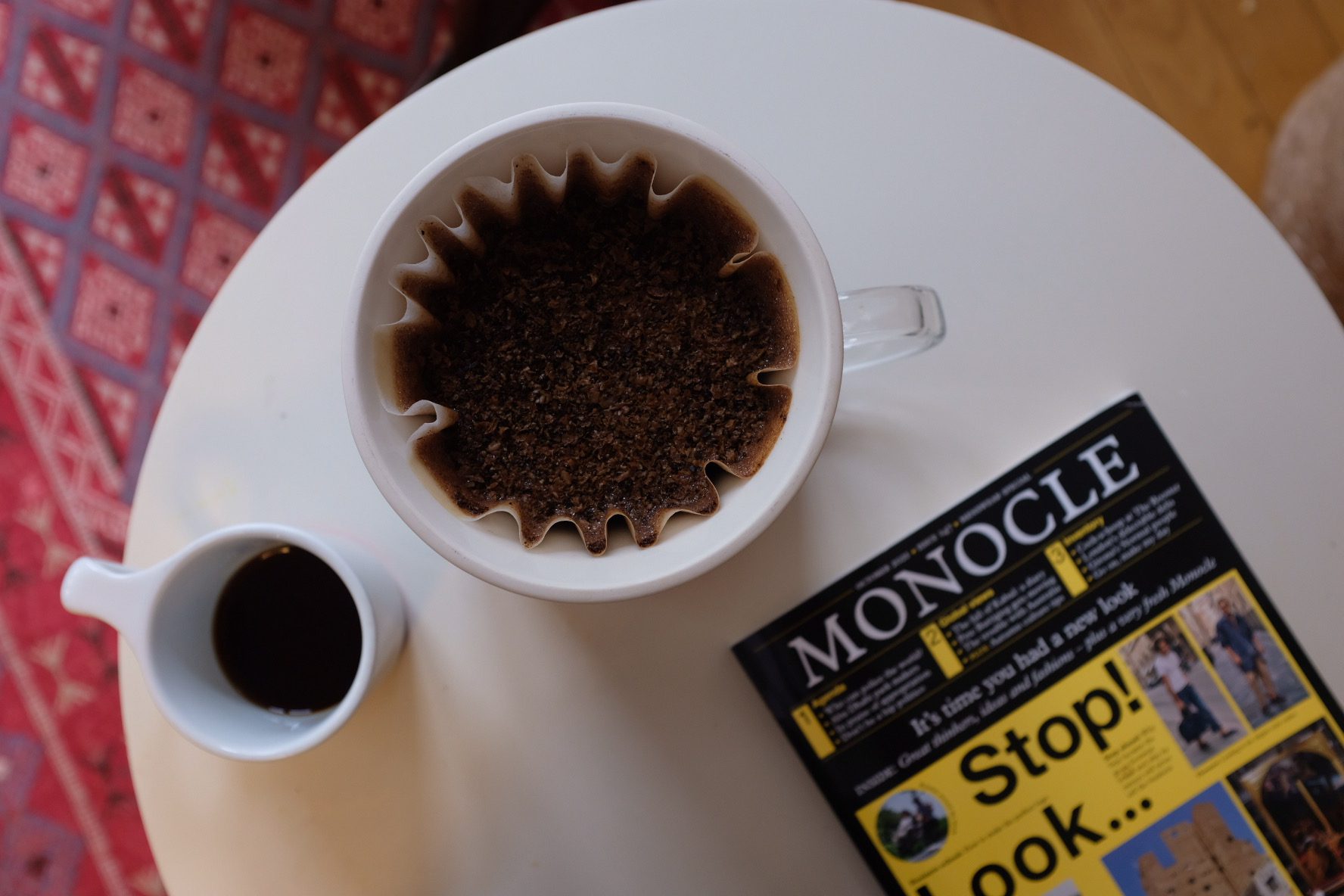Has this ever happened to you? You’re brewing a coffee. The bloom looks beautiful. Those tantalizing aromas start to fill your olfactory system. You slowly start to pour in a spiral motion as those first soluble compounds start to fill your carafe.
Then, inexplicably, the brew stalls out. The clock hits 5,6, 7 minutes and the brew is dripping as slowly as a cold brew tower.
There are lots of reasons why this can happen, so we’re here to help you trouble shoot your brew.
The Grind Setting is too Fine (or there are too many Fines)
The most likely solution is your grind setting is too fine or your grinder could be producing too many fines.
This first is an easy fix: try using a coarser grind setting.
The second is a little more complicated. Every coffee grinder produces fines, but if your burrs are dull or misaligned, your grinder might be producing so many fines it’s clogging the brew. The telltale sign here is if there’s a sludgy coating on your brew bed even at the coarsest settings.
If that’s the case, get out your tool kit because it’s time to disassemble your burr chamber (please unplug your grinder and follow manufacturer recommendations!). If the problem persists after a deep cleaning it’s probably time to get some new burrs.
The Coffee is very Dense
Washed coffees are denser than natural process coffees. Coffees grown at higher elevation tend to be denser than lower elevation coffees. Light roast is denser than dark roast.
If you have a light roast washed Ethiopian, it’s going to be extremely dense— so dense the water has a hard time percolating through the coffee bed.
On the bright side, that also means it’s extremely hard to over-extract.
So if you’re brewing a light roast Ethiopia or Kenya, my recommendation is to settle in, be patient, and be prepared for the brew to last 1-2 minutes longer than a lower elevation coffee.
That, or you can start buying medium roast.
The filter is clogged
Not all paper filters are created equal. Cheaper, thinner filters are more prone to clog as fine particles become lodged in the paper’s microscopic pores. Unfortunately, if this happens to you, there’s not much you can do, other than buying thicker filters.
The airflow is cut off
With flat bottom drippers, the pleats on your paper filter are really important. They help maintain airflow, which keeps the coffee flowing.
I’ve had a lot of baristas balk at the prospect, but when using a standard basket filter I don’t recommend rinsing. The paper is very thin and loses its shape very easily. The pleats tend to collapse and stick to the side of the dripper. This cuts off airflow and can lead to the brew choking.
When brewing with a Chemex, it helps to put the thicker part of the paper over the spout to keep the airflow flowing. Even then, don’t be surprised if you have to give the filter a lift if it becomes stuck to the sides of the cone.
